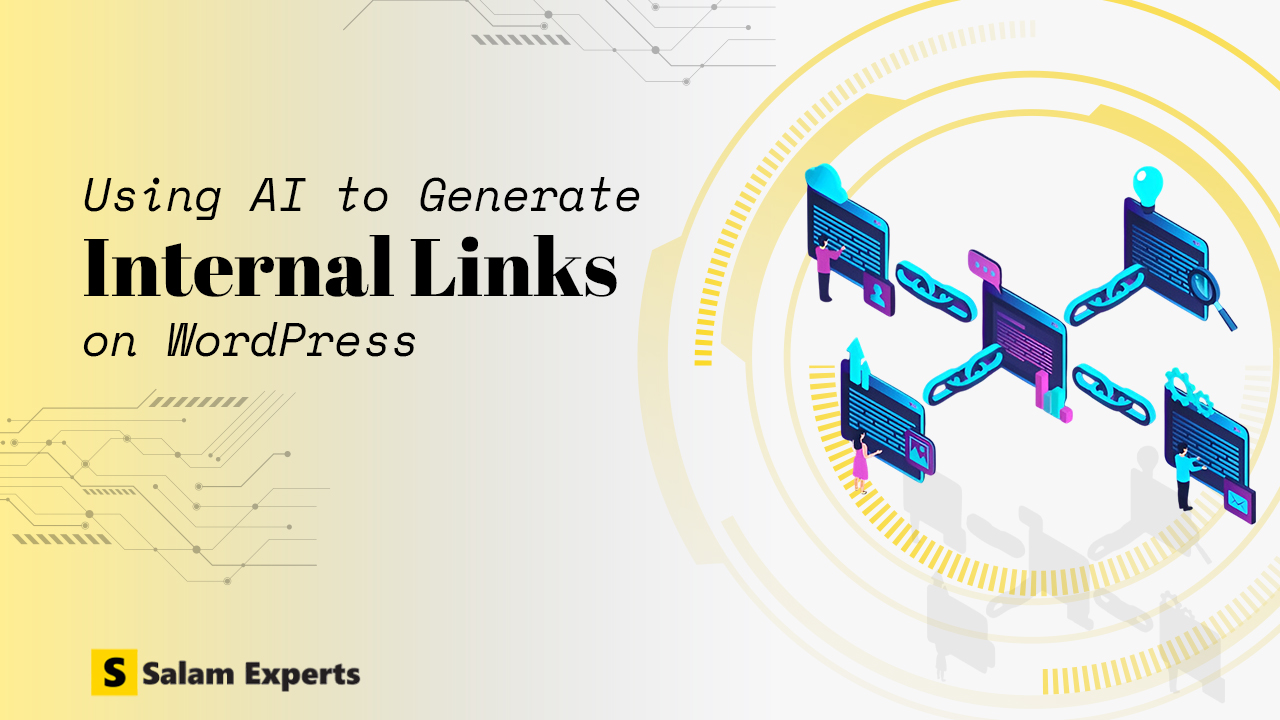Using AI to Generate Internal Links on WordPress (And Why It’s a Game-Changer)

Internal linking is one of the most underused yet powerful SEO techniques. It helps search engines understand your site structure, distribute link equity, and improve user experience. But manually managing internal links across dozens or hundreds of pages is tough.
This is where AI-powered internal linking tools come in. In this blog, we’ll explore how to use AI to create intelligent internal links on your WordPress site and boost your SEO without spending hours doing it manually.
🤔 Why Internal Links Matter for SEO
Internal links help with:
- Crawling & Indexing – Google follows internal links to discover new pages
- Site Structure – Tells search engines which pages are most important
- User Navigation – Keeps visitors exploring your site longer
- Boosting Page Authority – Distributes ranking power across key pages
📊 Example: Linking your blog post about “AI content writing” to your service page for “SEO content services” passes authority and keeps readers engaged.
⚡ The Problem with Manual Internal Linking
Manually placing internal links can be:
- Time-consuming
- Inconsistent
- Error-prone (e.g., broken or repetitive links)
AI tools can automate and optimize this process using smart algorithms and keyword analysis.
🤖 Best AI Tools for Internal Linking in WordPress
🔗 1. Link Whisper
One of the most popular AI-powered internal linking tools.
Features:
- Suggests internal links as you write
- Adds internal links in bulk to old posts
- Reports orphaned content (pages with no internal links)
How to Use:
- Install the plugin
- As you write or edit a post, it suggests relevant anchor text + links
- Approve or adjust them, then add with one click
💡 Example: You’re editing a post about “WordPress SEO tips,” and Link Whisper suggests linking to your older post on “technical SEO audit for WordPress.”
🧠 2. Yoast SEO Premium
While not as comprehensive as Link Whisper, Yoast’s Premium version has smart internal linking suggestions in the sidebar.
Features:
- Recommends related posts based on content
- Lets you insert links quickly as you edit
🤓 3. Surfer SEO’s Content Editor + Internal Linking Tool
Great if you’re writing content that’s already optimized with Surfer SEO.
Features:
- Recommends internal links based on your entire site structure
- Analyzes link depth and topical relevance
🛠️ Best Practices When Using AI for Internal Linking
✅ Keep Links Natural: Make sure suggested links fit organically in the sentence
✅ Vary Anchor Text: Don’t use the same keyword for every link—keep it diverse
✅ Focus on Relevance: Only link to content that genuinely helps the reader
✅ Avoid Overstuffing: More links ≠ better—3 to 5 high-quality internal links per post is often enough
💡 AI + Strategy = Better SEO
AI doesn’t replace SEO strategy—it enhances it.
Here’s a solid internal linking workflow:
- Write high-quality content
- Use AI to suggest relevant internal links
- Manually review and approve suggestions
- Track link performance with tools like Google Search Console
📈 Pro Tip: Revisit older posts and use AI tools to add internal links to newer, high-converting pages.
🚀 Final Thoughts
Smart internal linking is a proven way to boost SEO, and AI tools make it faster, smarter, and scalable. With plugins like Link Whisper or Surfer SEO, even a small website can feel like it has an in-house SEO team.
So the next time you publish a blog post or service page, let AI give you the internal linking edge.






